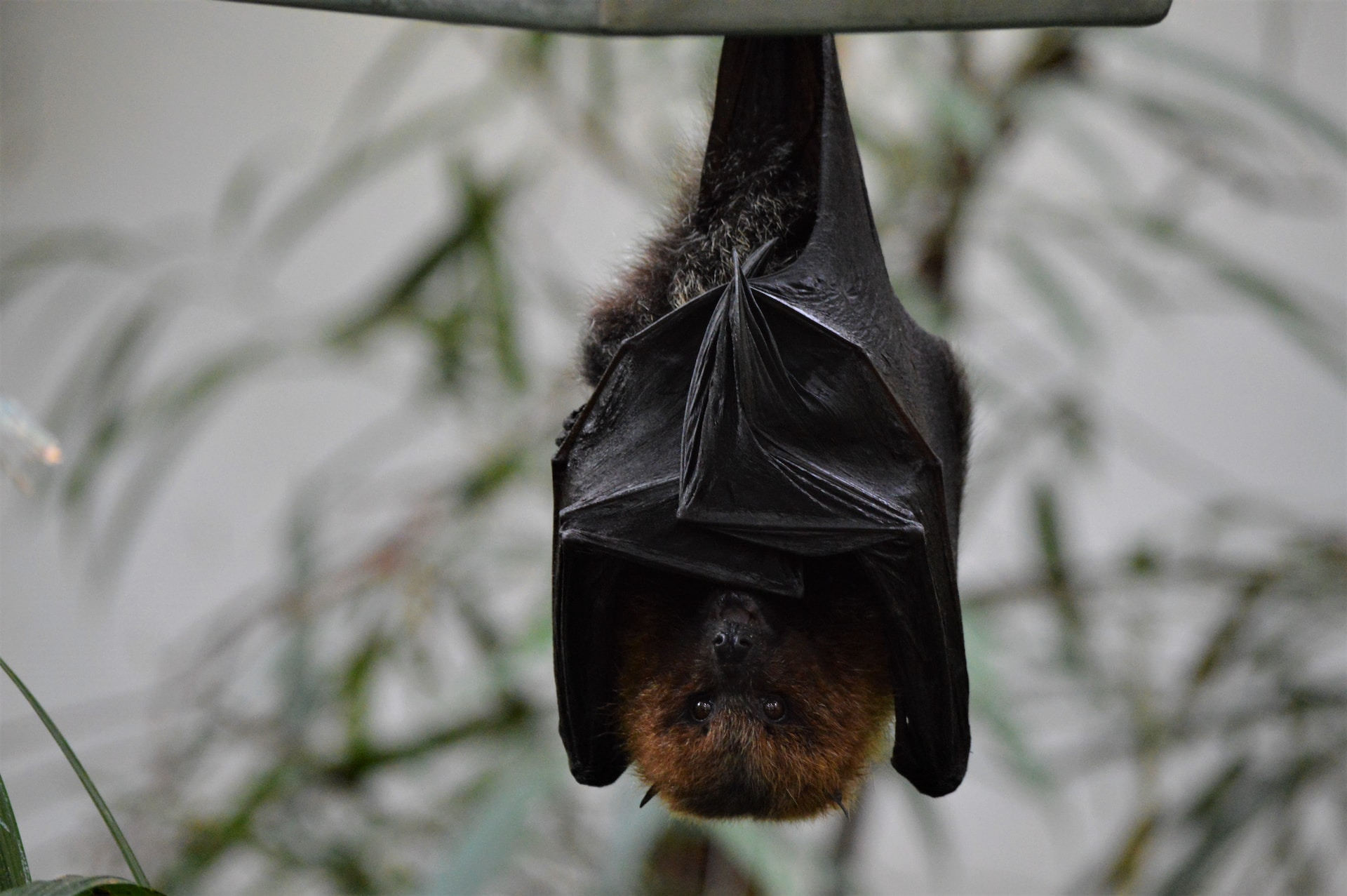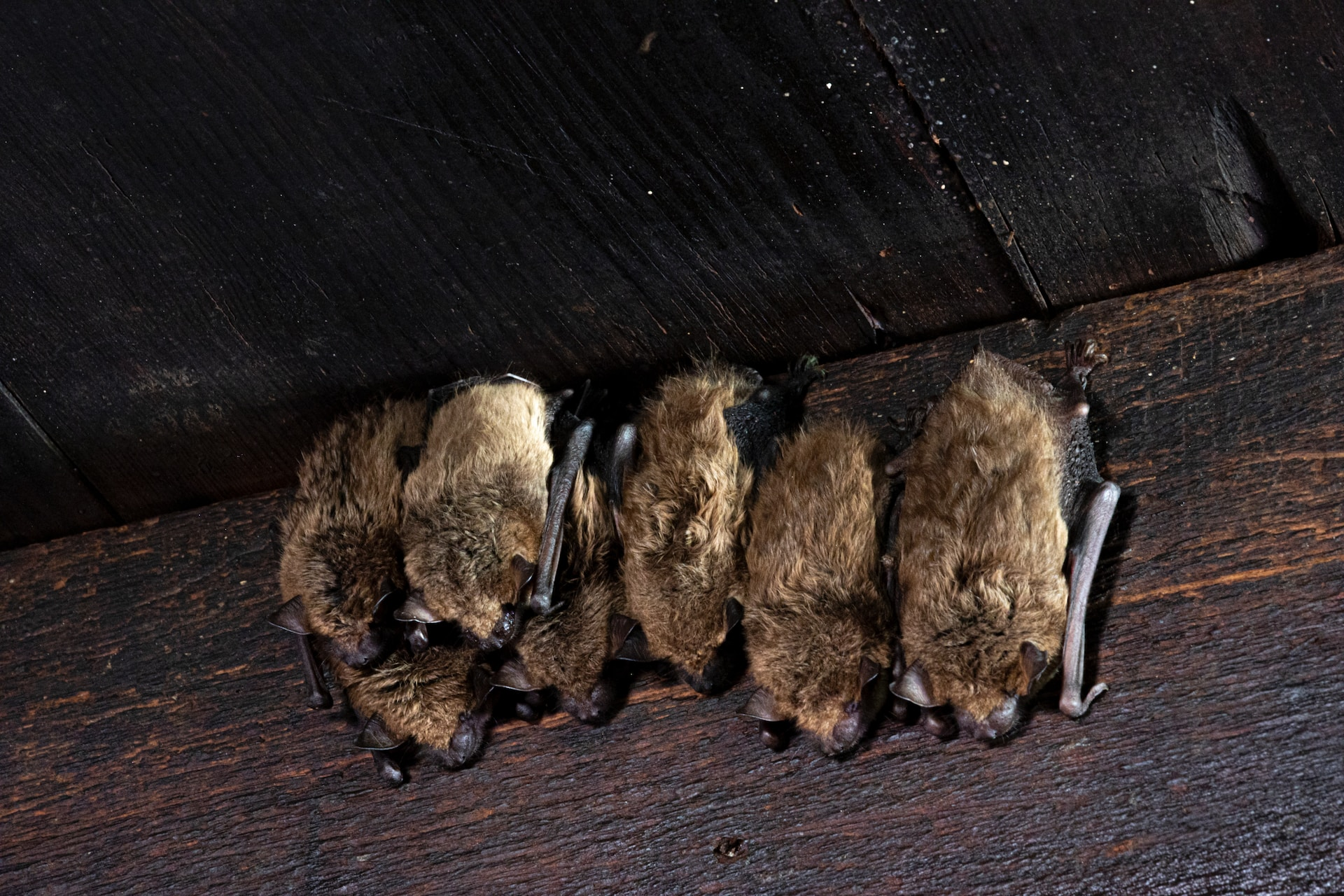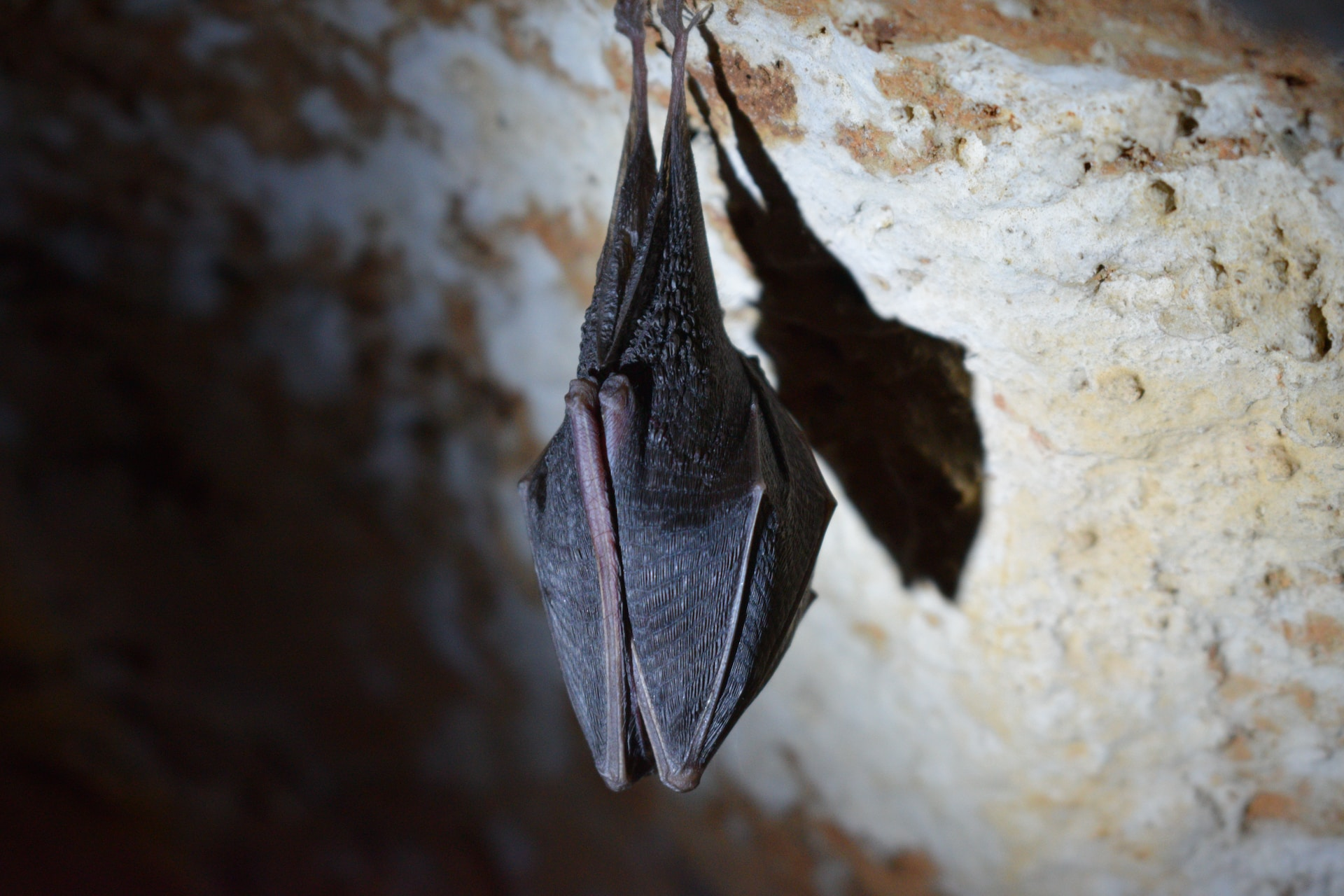META: Learn to identify bat guano and act responsibly. Our guide explains health risks, identification, and steps to take. Trust Elite Pest and Wildlife.

Canadians are no strangers to the wildlife that shares our beautiful country.
We’re sure you’re familiar with the classic late-night rustling in the backyard, the stunning fauna sightings in the park, and yes, even the unexpected discoveries in both our attics and garden sheds.
We’re used to it at this point.
However, today, we wanted to turn the spotlight onto one such often-unseen guest. One that is usually nothing more than a dark flash in the night or a tiny squeak we may or may not be young enough to hear.
We’re, of course, talking about bats.
More specifically, we’re looking at something they leave behind – bat guano.
“Bat guano? What’s that?” you may ask.
And we’ll raise you one better; why is this something you should be thinking about?
Well, if you’re living with a bat droppings problem, then you already know why this is so important, and today, we’re covering everything you need to know on how to deal with it.
Let’s jump in.
What is Bat Guano?

In the simplest terms, guano refers to the accumulated droppings of certain animals.
Yup, while you can get bird guano and even seal guano, in this case, it’s essentially a big pile of bat poop.
While there’s nothing inherently wrong with this, it becomes a real problem when the quantity of the excrement starts to grow.
Say you have some bats in your attic. They live in the same area of the attic, going to the toilet on your floor over and over again, and this causes a pile and large mass of guano to form and grow.
As you can imagine, this creates terrible smells and moisture issues and may even cause structural damage and rot to your property.
Long story short, it’s something you need to get sorted.
For those interested, these droppings are given a special name because, unlike your average animal droppings, bat guano plays a significant role in the environment.
Being enriched with nutrients such as nitrogen, phosphate, and potassium, bat guano acts as a potent natural fertilizer and soil amendment. When the bats live in the trees, and the guano falls to the ground, it’s perfect for the soil and plants underneath.
In fact, guano can be so good for plant growth in this way that it’s even used as a foliar spray fertilizer in some parts of the world.
The nitrogen and phosphorus are just ideal for promoting healthy growth, and it’s this natural recycling of nutrients underscores the integral role bats play in Canada’s thriving ecological balance.
In your home, bat poop is not so helpful or welcomed.
Is Guano Dangerous?
https://www.youtube.com/watch?v=aI_dEmD8PUI&pp=ygUTd2hhdCBndWFubyBnb29kIGZvcg%3D%3D
While guano’s environmental benefits might paint it in a positive light, it’s essential to also consider the potential health risks it may pose.
Like any animal excrement, Bat guano can create an environment that fosters the growth of fungi and bacteria. It’s all those minerals and nutrients that help it all thrive.
Specifically, guano can provide nutrients to a notorious fungus known as Histoplasma capsulatum, which thrives in guano-rich environments, especially when moist and sheltered.
Again, we’re talking attics, sheds, wall spaces, and the sorts.
Even for those without compromised immune systems, the primary concern with Histoplasma capsulatum lies in its tendency to cause a lung infection called histoplasmosis when its spores are inadvertently inhaled.
For most people, this condition is relatively mild, resembling a minor flu.
However, those with weakened immune systems or pre-existing respiratory issues could face more severe symptoms.
Understandably, the idea of this fungal growth in or around your home is far from appealing.
Before you start to panic, don’t worry. These infections are pretty uncommon in Canada, with only a few dozen cases reported over the last ten years. But this is the worst-case scenario.
More commonly, guano can spread disease and pathogenic viruses and cause sickness, symptoms of which include high fever, blood abnormalities, heart and breathing problems, and more.
Not a risk you want around you, your children, pets, and loved ones.
The best way to solve this is to take safe action.
Where is Guano Found?

Bat guano isn’t something you’ll typically stumble upon in everyday life in Canada.
Bats tend to be relatively private creatures, scared of larger beings like humans, so the locations where they roost and leave their droppings might not be spots you frequent daily.
They much prefer to roost in dark, secluded, and stable environments, which means attics, lofts, sheds, barns, abandoned buildings, and traditionally a cave or two.
Tree crevices or even under the bark of some trees can also make great homes for bats, so if you have trees in your garden or wooden gardens nearby, it may be worth checking them out routinely.
These are all ideal places for bat guano to accumulate.
If you feel you have a bat presence and possibly a guano problem, check your house for potential entry points for bats, including under eaves or near small openings to your attic or loft.
If you notice a small, concentrated pile of droppings beneath a particular spot on your exterior walls or roof, that could indicate the presence of a bat roost above, and perhaps a significant guano issue.
It’s also worth mentioning that bat roosts aren’t always solitary.
In fact, bats are known for their large communal roosts, like a nest, called ‘colonies’ where hundreds or even thousands of bats can live together at high levels. In these situations, the pile of guano produced can be quite substantial!
How to Identify Bat Guano
So, you’re checking over your property and spot suspicious-looking feces. Perhaps you’re in your attic storing Christmas decorations, and you spot something dark and ominous.
How do you know whether this is bat guano or not?
First, start with the size.
Bat guano tends to be small — typically around half an inch long.
If you’re familiar with rodent droppings (think of mouse droppings, for example), bat guano is somewhat similar in size. However, where it distinctly differs is in its shape and composition.
Unless you’ve got a group of fruit bats dwelling in your backyard, which isn’t common in Canada, most bat species here feed primarily on insects.
This diet affects the consistency of their droppings, which contain bits of insect exoskeletons, making them brittle and easily crumbled when touched (but please, don’t actually touch your bare hands!).
You might notice a fine powdery residue left behind, accompanied by shiny specks from those insect fragments.
Compare this with rodent droppings that are generally harder and don’t break apart as easily. If you’ve got a pile of crumbly, shiny droppings, chances are it’s bat guano.
Another valuable identification clue? Location.
As we’ve mentioned earlier, bats prefer to roost in elevated, enclosed spaces like attics or the undersides of structures. So, if you find droppings in such an area – particularly in more substantial quantities – this might further confirm a bat presence.
Finally, the arrangement of droppings can provide hints.
Mice and other rodents tend to leave sporadic droppings along their trails as they roam about the world, whereas bats often leave concentrated piles of guano underneath their roosts.
So, a clustered pile of droppings could point to bats rather than other critters.
What To Do If You Find Guano

Alright, so you’ve used your newfound knowledge to identify a suspicious pile of droppings as potential bat guano.
Now comes the crucial question: what’s next?
How should you, as a property owner, approach this situation responsibly?
Here’s a step-by-step guide on what to do:
Step #1 – Don’t Touch It
Your instinct might be to clean the guano right away, especially if you find guano in a place that’s accessed frequently.
However, always remember that bat guano can harbor fungal spores that can potentially cause histoplasmosis.
Therefore, avoid direct contact with the guano, especially in enclosed spaces with poor ventilation.
Step #2 – Call in a Professional
The safest course of action upon discovering bat guano is to reach out to a professional wildlife control service – experts have the training and equipment to handle and remove guano safely, minimizing any health risks involved for you and your household.
During the cleaning process, they’ll typically help you locate the source of the problem, i.e., any roosting bats nearby.
Step #3 – Bat Eviction
While your guano issue’s sorted, the chances are it’ll be a recurring problem if you don’t move the bats themselves along. It’s bittersweet, a celebration of nature’s vitality on the one hand but a real homeowner issue on the other.
That’s when eviction comes into play.
Let’s be clear here: we’re talking about a humane form of eviction. This typically involves installing one-way doors or tubes that allow bats to leave but not re-enter the building. However, it can depend on your individual circumstances.
Again, a professional will be your best bet, ensuring an effective, safe, and humane eviction.
Remember, it’s illegal to kill bats in Canada since they’re a protected species, with possible fines reaching up to $10,000 per animal (yes, that’s per bat).
Step #4 – Prevent Future Intrusions
Once the bats have been evicted, you’ll want to ensure they don’t find their way back in, thus preventing the problem from happening again.
Our professionals come back to play here as they can help identify and secure potential access points, deterring bats from returning to the same spot.
This might mean applying netting or screens, sealing gaps and other openings, or installing bat houses to provide a more attractive roosting option away from your home.
By taking these steps, you’ll be handling your bat guano discovery responsibly and humanely, promoting a harmonious balance between your property and the diverse wildlife we share our environment with while safeguarding the health of everyone living within your home.
The Role of Elite Pest and Wildlife in Guano Handling
As you can see, getting a professional in is your best bet when solving, curing, and preventing any bat guano problem you may have. And if you want to ensure a smooth, stress-free experience, you’ll want a professional service who can handle every step of the process.
Enter Elite Pest and Wildlife. Hey, that’s us!
We pride ourselves on our professionalism, experience, and compassion — always prioritizing the safety of both humans and animals alike and ensuring every step is conducted right the first time.
Here’s an overview of how we can be of service:
✅ Inspection
Our trained technicians conduct thorough inspections to identify the presence of bat guano, evaluate the extent of infestation, and locate any roosting bats. This helps us create a tailored action plan for your property’s unique needs.
✅ Safe Bat Guano Removal
Armed with the knowledge of potential health risks, we handle bat guano clean-up using specialized equipment and techniques to ensure everyone’s safety. From protective gear to proper disposal, we make safety our number one priority.
✅ Humane Bat Eviction
Respecting Canadian wildlife law, our team is committed to humane, non-lethal bat eviction measures. Installing one-way doors or tubes allows bats to leave while preventing their re-entry, all while minimizing their stress and discomfort.
✅ Exclusion and Prevention
To protect your property from future bat intrusions, our technicians will secure all identified entry points and provide guidance on preventative measures. Our goal is to maintain a wildlife-friendly environment without compromising your property’s safety.
✅ Support and Education
We value providing our clients with the knowledge they need to make informed decisions. Our friendly team is always available for consultation and will walk you through every step of the process, ensuring you feel confident and in control.
Trust Elite Pest and Wildlife to see you through your bat guano and wildlife challenges.
We’re dedicated to delivering safe, humane solutions that promote responsible stewardship of our shared environment — creating a harmonious balance between your property and the surrounding wildlife, all for a sustainable, affordable price.
Wrapping Up
So, there you have it — you’re now more savvy about bat guano than you probably ever expected to be!
And while it’s not something you’ll likely bring up at your next dinner party, it’s precious information for your property’s health, safety, and maintenance.
Remember, bats are integral to our ecosystem, and though their presence can sometimes cause a bit of unwelcome hassle, knowing how to handle such situations responsibly makes a huge difference.
At Elite Pest and Wildlife, we’re here to help make these encounters less daunting for those in the Hamilton, Burlington, Oakville, Kitchener, Waterloo, London, Niagara, Mississauga & Guelph areas.
Our team is trained to tackle your bat-related challenges effectively and humanely, ensuring a safe space for everyone — you, your family, and our bat friends.
Ready to move forward?
Give us a call or drop us a message, and let’s collaboratively steward your property in harmony with wildlife. Trust Elite Pest and Wildlife, your partners in responsible, informed property and wildlife management.

